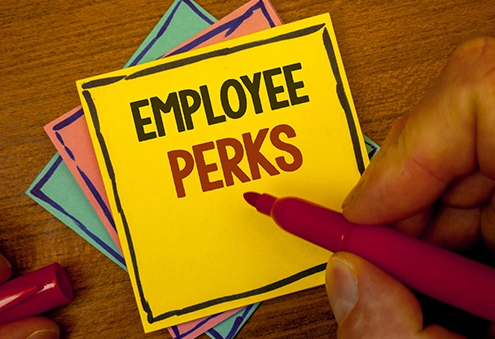How you and your team can both reap the rewards of a culture shift
It can start with something as simple as ‘thank you’.
Motivation through rewards isn’t a new idea. The notion that ‘people respond to incentives’ is a cornerstone of economics. Each new generation reinvents the concept. One of the buzz phrases out there right now is ‘nudge theory’.
This is based on the idea that you can influence the behaviour of individuals by changing what has been called “choice architecture”. In Liverpool, a behavioural science company was asked to install audio-visual prompts at a dangerous road crossing in the city centre. They used ‘embedded nudges’ to encourage safer crossing by pedestrians.
There is no doubt that subtly manipulating human behaviour has a place in specific settings such as road safety – but it seems cold and transactional. It isn’t very collaborative.
Moving away from transactional dynamics
Millions of people spend a significant proportion of their lives in their workplace. It is how they pay their mortgages, put food on the table, heat their home and are able to do the things they enjoy, whether that is socialising, eating out, going on holiday or something entirely different.
We accept that we have to graft a little to get the things in life we need and want. The traditional view is that work is a mainly transactional concept: we turn up and do a job for our contracted time and we receive money in return.
But given how much time we spend at work, it is not unreasonable to expect to spend those shifts in an environment that makes us feel welcome, values our ideas and input and acknowledges our hard work.
Prompting productivity
Study after study has shown workplaces that create this kind of environment are more productive and more likely to retain talented people.
It was, therefore, surprising to find out how many employees in the UK feel undervalued at work. According to a new survey, 10m people across the country are unhappy in their jobs with an incredible 79% of employees saying they would take a job elsewhere if given the opportunity.
Corporate rewards and employee recognition specialist Love2shop carried out the study. It also found that just 12% of employees ‘strongly agree’ that their employers are generous.
Love2shop organises reward and recognition programmes for both employees and customers in partnerships with firms and organisations in multiple sectors. Its reward services include the popular Love2shop brand, which offers physical or digital vouchers that can be spent with more than 150 leading consumer brands.
But a rewards programme has to be more than just a manager handing a voucher to an employee who has completed a piece of work. People want to feel genuinely valued and appreciated. That requires a culture shift within the organisation.
Small gestures have a huge impact
In a discussion on the Road to Recognition: How to make employees feel valued organised by HR Magazine, Nebel Crowhurst, Vice-President of international education partnering organisation Into University Partnerships, said even the smallest gestures can have a huge impact.
She explained: “The things that really stand out, sometimes, are really small moments when someone can just say ‘thanks’. That thanks can be for the tiny things when you’re having a difficult time.
“Maybe someone notices you struggling and says ‘what can I do to help you?’ or ‘thanks for that really great piece of work that you did.’
“No matter what your role in a business, it’s just really nice when you have that feeling of someone saying thank you for that real ‘in the moment’ appreciation. Those moments that come from all different directions are what make a difference. People feel cared for and feel like they belong.”

Making people feel connected
Also on the panel was Stuart Curtis, senior director of global talent development at Workhuman. He said an effective recognition programme can also help more introverted employees feel more part of the team
“Investing in recognition also helps people who are highly introverted and don’t like to talk about themselves,” he said. “It’s got to be authentic. It can’t be generic, it can’t be copy and paste. Done right, the impact that has is just incredible in somebody’s life.
“People who are recognised frequently are 70% more likely to report thriving in the rest of their life because it gives some incredible feeling. They’re also five times more likely to connect that success to the culture of your organisation.”
Once you have started to establish a business culture that is both inclusive and nurturing, building on that with tangible rewards can create a powerful offer that can help create a productive and dynamic environment.
Strong results, low cost
Frank Creighton, Director of Business Development at Love2shop, said: “The extent to which UK workers feel undervalued and under-appreciated is worrying. The fact that one-third of staff feel undervalued should be a massive wake-up call for UK business.
“How undervalued employees are resolving this situation poses even greater concern. Our report indicates that many will continue to vote with their feet by finding a business that does appreciate them.”
This unwillingness by some employers to value their people has led to the rise of a phenomenon known as the ‘Great Resignation’. With the number of job vacancies at an historic high, people are seeking new jobs in ever greater numbers. This is bad news for staff retention and business continuity – and ultimately, expenditure.
“This ongoing nationally recognised trend is costing companies a huge amount of unexpected expenditure in recruitment, training and time,” added Frank. “That’s why it’s so important for more businesses to start making staff feel appreciated – by changing their attitude towards rewards.”
Attract, retain and engage through rewards
Love2shops offers a choice of multi-retailer gifting rewards, helping businesses attract and retain employees and customers.
With its award-winning digital platform, Love2shop also enables clients to plan, launch, communicate and maintain incentive or reward programs with minimal effort while delivering performance improvement.
Love2shop’s Everyday Benefits Card is already proving invaluable for employers who want to support their staff during the cost of living crisis. It offers a 7.5% discount on card loads to employees, helping them reduce their day-to-day spending.
Appreciate has calculated the average family can save more than £1,300 a year via the Everyday Benefits Card. It can also help with one-off purchases which is useful with Christmas just around the corner.
Visit love2shop.co.uk to learn more about how Appreciate can help your business introduce a reward and recognition programme that is cost-effective, simple and right for you.
Everyday Benefits cards and Love2shop are flexecash products. Flexecash is the prepaid card platform that issues flexecash Love2shop Cards. This facility is provided by Park Card Services who are Authorised and Regulated by the Financial Conduct Authority to issue electronic money. FRN: 900016.
Love2shop Cards are regulated by the Financial Conduct Authority and as such we may need to complete an electronic identity check.







 Eggs and flour are regular features on the supermarket shelves again, along with your favourite craft beer and wines. You can even pop out for a pint and see your friends in the park. But the country’s staff aren’t gagging to give up remote working.
Eggs and flour are regular features on the supermarket shelves again, along with your favourite craft beer and wines. You can even pop out for a pint and see your friends in the park. But the country’s staff aren’t gagging to give up remote working. Every week, Group and Human Resources put together a round-up of news and views from around the business and push it out to staff. That might include blogs written by people in our company, surveys to get opinions and feedback from staff about their work and their response to Group efforts, news on how the business is responding to COVID-19 developments, and any human resources developments that might affect staff.
Every week, Group and Human Resources put together a round-up of news and views from around the business and push it out to staff. That might include blogs written by people in our company, surveys to get opinions and feedback from staff about their work and their response to Group efforts, news on how the business is responding to COVID-19 developments, and any human resources developments that might affect staff. Our daily catch-ups give us a chance to see some friendly, familiar faces, talk about what we’re doing inside and outside of work, gripe about some things, gloat about others. It’s also crucial for making sure everyone is on the same page with their tasks.
Our daily catch-ups give us a chance to see some friendly, familiar faces, talk about what we’re doing inside and outside of work, gripe about some things, gloat about others. It’s also crucial for making sure everyone is on the same page with their tasks. You might be thinking “everyone hates meetings though”. Which might be a fair point, but in our experience everyone’s still on time for them, which wasn’t always the case when they were face to face. And they still contribute.
You might be thinking “everyone hates meetings though”. Which might be a fair point, but in our experience everyone’s still on time for them, which wasn’t always the case when they were face to face. And they still contribute.

 Say it and mean it. Let staff know the great work they do is valuable, and it’s helping your business reach its goals. Verbal recognition is personal and emotional. It can have great upticks in employee morale.
Say it and mean it. Let staff know the great work they do is valuable, and it’s helping your business reach its goals. Verbal recognition is personal and emotional. It can have great upticks in employee morale. Not every team has a stand-out star. Not every project has a lead individual to single out for recognition.
Not every team has a stand-out star. Not every project has a lead individual to single out for recognition. Lean on your internal communications to showcase the achievements.
Lean on your internal communications to showcase the achievements. If you can spare one, whiteboards and noticeboards are extremely useful. It’s not as advanced as
If you can spare one, whiteboards and noticeboards are extremely useful. It’s not as advanced as  If you can afford to foot the bill for a team lunch, let a star performer pick the weekly or monthly meal, however best suits your team.
If you can afford to foot the bill for a team lunch, let a star performer pick the weekly or monthly meal, however best suits your team. Put aside cash for a monthly donation to a smaller charity of choice. Big charities will barely notice a £50 donation, but many staff have charities close to their hearts. So target smaller charities with causes close to your staff’s lives.
Put aside cash for a monthly donation to a smaller charity of choice. Big charities will barely notice a £50 donation, but many staff have charities close to their hearts. So target smaller charities with causes close to your staff’s lives. More than once in this piece we’ve mentioned values. We talk about them so often because they’re so important. They’re vital to shaping the attitude and the culture of your company.
More than once in this piece we’ve mentioned values. We talk about them so often because they’re so important. They’re vital to shaping the attitude and the culture of your company.